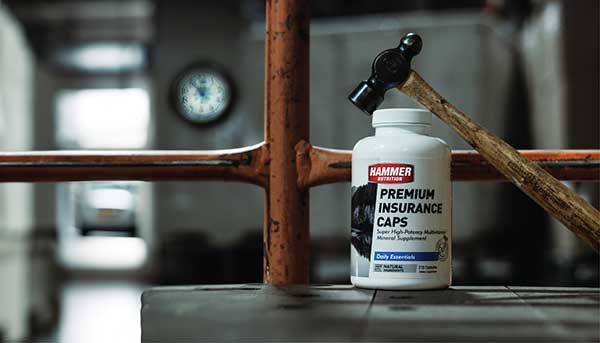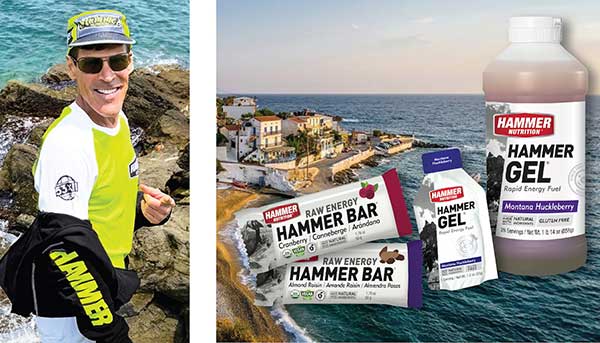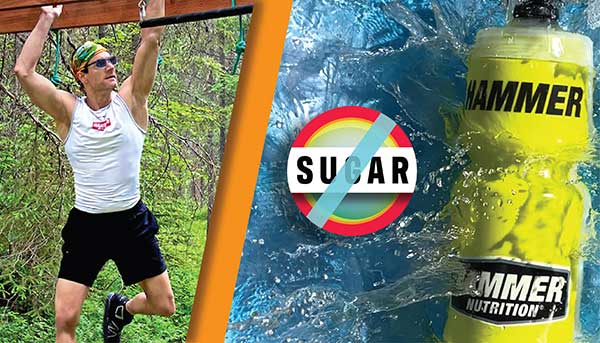
BY STEVE BORN
It’s the first week of March as you read this article, and with many of your key events not happening for several weeks to months (definitely months, here in Montana), you might be thinking, “Carbo loading? Now? Are you crazy?”
Hear me out, though. I have no doubt that the rationale is sound and that, if applied consistently, you will experience noticeably higher quality in your training leading up to your events, as well as better performance in the events themselves. Oh yes, while you’re at it in the “carbo loading” aspect, you’ll also be doing something equally if not more important: recovering optimally between all of your workouts leading up to your races.
In my opinion, the right way—no, make that the only way—to truly “carbo load” is to do it g-r-a-d-u-a-l-l-y. Think of it this way: When you start your training season, you don’t bust out with super long runs or rides, hill repeats, and high-intensity speed work from the get-go, do you? No, you do base miles, and then gradually increase the duration and intensity of your training so that your body becomes more accustomed to the stress you put on it, thus becoming fitter as the weeks go by. Additionally, you don’t wait until the week before an event to start training, do you? Of course not!
These examples can be applied to “carbo loading” as well, which is more appropriately defined as maximizing muscle glycogen stores.
Muscle glycogen? What’s that?
When you begin a workout or event/race, the primary fuel your body uses for the first 60-90 minutes or so is known as muscle glycogen, a glucose polymer (complex carbohydrate) that contains thousands of glucose units arranged in branched chains. As your stores of muscle glycogen become depleted, your body switches over to burning fat reserves along with carbohydrates and protein consumed during exercise. You've only got a finite amount of this premium fuel, muscle glycogen, but its importance is hard to overstate. In fact, several studies have shown that the pre-exercise muscle glycogen level is the most important energy determinant for exercise performance. Bottom line: If you want to have the best event/race possible, you want to start it with as much muscle glycogen “on board” and ready to serve you.
Maximizing glycogen stores is so easy; here’s all you need to do!
- You train intelligently and consistently.
- You “refill the tank” with high-quality carbohydrates and protein ASAP after all of your workouts.
That’s it! That’s what “carbo loading” is all about. It is NOT what you eat (or how much) in the week before the event/race, and it’s NOT what you eat (or how much) the night before the event/race. It is the replenishment of carbohydrates and protein in the first 0-30 minutes (the sooner the better) after ALL of your workouts in the weeks and months leading up to the event/race.
Recall what I said earlier about training – you don’t try and to gain all of your fitness all at once; it’s a gradual process. Additionally, you don’t wait until the week before your event/race to accrue the fitness you need. The exact same is true with about maximizing muscle glycogen stores (“carbo loading”). It is a gradual process, one that takes several weeks to happen, and it’s a process that cannot be truly achieved in the week leading up to an event/race.
How it all works
Along with insulin, which regulates blood sugar levels of ingested carbohydrates, an enzyme known as glycogen synthase converts carbohydrates from food or fuel into glycogen and stores it in muscle cells. This also drives the muscle repair and rebuilding process. However, to maximize the recovery process, you need to take advantage of glycogen synthase when it's most active. Carbohydrate replenishment as soon as possible after exercise, when the body is most receptive to carbohydrate uptake, maximizes both glycogen synthesis and storage.
Intake of protein along with carbohydrates is also extremely important in the glycogen restoration process. Protein, of course, is required for muscle tissue repair and for supporting strong immune system function, but research shows that “the addition of protein to the carbohydrate supplement increased the rate of glycogen storage by approximately 38% over the first 4-hours of recovery.”
REFERENCE: https://www.ncbi.nlm.nih.gov/pmc/articles/PMC3905295/
The oft-used phrase, “striking while the iron is hot” absolutely applies to many aspects of recovery, especially in regard to muscle glycogen synthesis and storage. That’s why, before you get out of your sweaty cycling kit or running clothes, before you hit the shower, before you do your stretching, and before you get horizontal and take a nap, put some fuel back into your body. Do that, taking advantage of the glycogen synthase enzyme when it’s most active, and you will enjoy a HUGE advantage over those athletes who either blew off post-workout refueling or waited too long to “refill the tank.”
Summary
Training causes physical stress and depletion. Recovery is when adaptation to that stress occurs; it involves improvements in muscle tissue rebuilding, glycogen storage, and immune system functioning. After a hard training session, your body is basically saying, “If there's another workout like this tomorrow, I better be prepared.”
You can really give yourself a major advantage in all of your training sessions, and especially on the day of your event/race, if you'll take the time to put some quality nutrition into your body as soon as possible after all of your workouts.
A high-quality carb + protein recovery drink such as Hammer Nutrition’s post-workout fuels Recoverite and Organic Vegan Recoverite (or Whey Protein/Organic Vegan Protein + a quality carbohydrate source), will help you “refill the tank,” effectively replenishing and maximizing muscle glycogen stores. A high-quality solid food meal will also work. That, in my opinion, is the true definition of “carbo loading” and the time to begin the process is now… trust me, your body will thank you and the quality of your workouts and events and races will be your proof.









2 comments
How do you square your advice to replenish carbohydrates and protein in the first 0-30 minutes (the sooner the better) with your advocacy for adopting an intermittent fasting schedule of eating? I do my lifting/aerobic workouts first thing in the morning and then don’t eat for 3-5 hours after.
———
Hammer Nutrition replied:
Hi Cheryl, Thank you for your comment. Please see my previous lengthy comments on this subject. This article deals with optimum recovery practices. If that is the goal, continuing to fast after your workout will help to continue fat metabolism, but muscular recovery will be slower. There’s nothing to square here, it’s simply a choice for each athlete to make, and it can change depending on the circumstances – 3-5 days before a big event, go for optimum recovery. Daily training, especially when when trying to trim weight, go for the continued fasting. BDF
Do believe in Casein at night ? I know you believe in no eating three hours before bed.
———
Hammer Nutrition replied:
Hi Mark, Casein maybe, but whey isolate with Glutamine with water just before bed has been a recommendation of ours for years. BDF